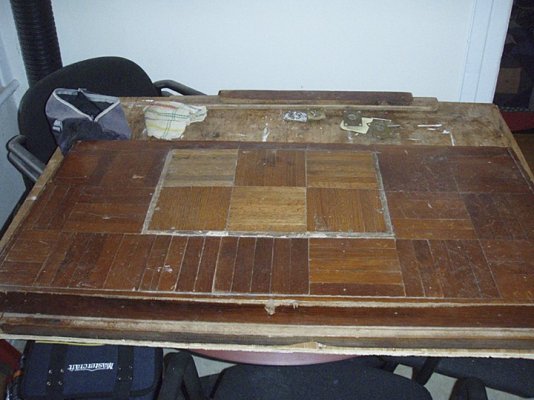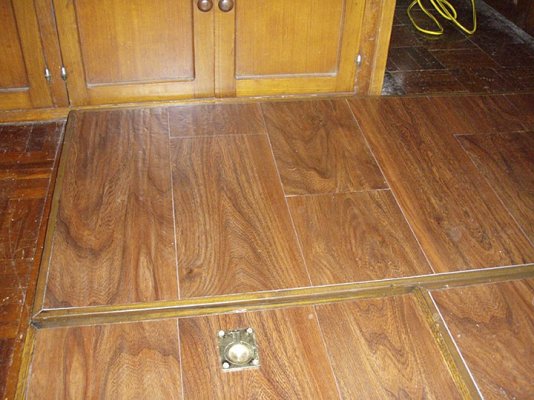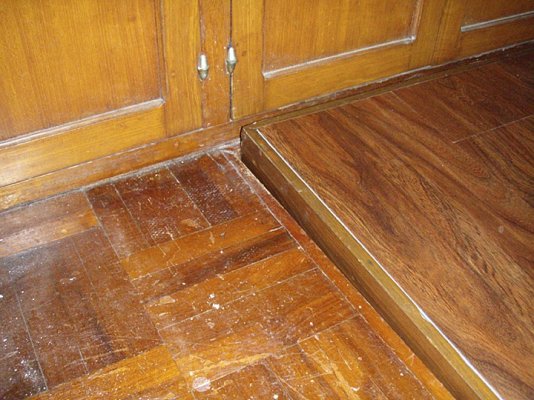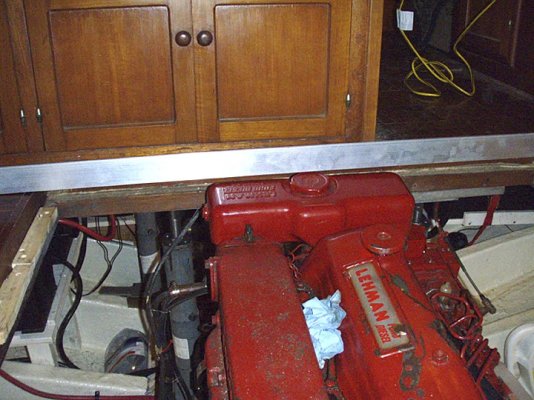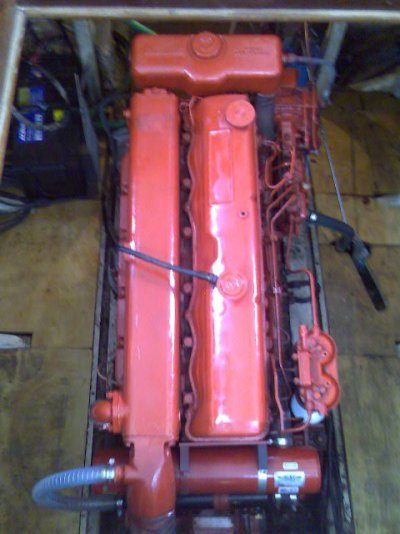Fotoman
Guru
- Joined
- Nov 12, 2009
- Messages
- 649
Here's the situation. I'm in the process of replacing my floor in my Marine Trader. The parquet is in bad shape and the plywood underneath is soft in some places.
When I bought the boat, the PO had modified the trap above the engine (Flord Lehman 120) because the trap was resting on the expansion tank (picture 1). I figured it was because the floor was sagging a bit so I went and got some jackposts and raised the beams underneath until they were straight again.
But even now that the beams are straight the trap is sill resting on the expansion tank. The trap is still about 1 1/4 inch too high. I'm going to put a 3/4 plywood before laying the new floor but there is no way I can compensate that much. Any idea?
When I bought the boat, the PO had modified the trap above the engine (Flord Lehman 120) because the trap was resting on the expansion tank (picture 1). I figured it was because the floor was sagging a bit so I went and got some jackposts and raised the beams underneath until they were straight again.
But even now that the beams are straight the trap is sill resting on the expansion tank. The trap is still about 1 1/4 inch too high. I'm going to put a 3/4 plywood before laying the new floor but there is no way I can compensate that much. Any idea?

